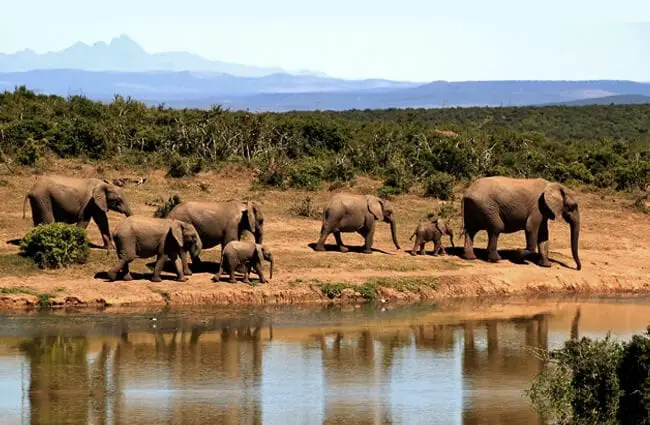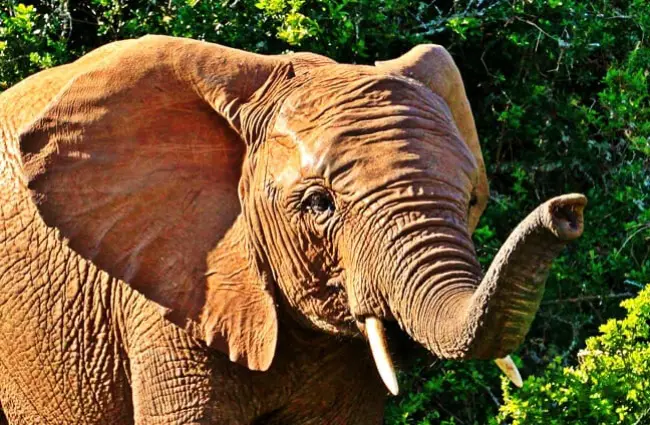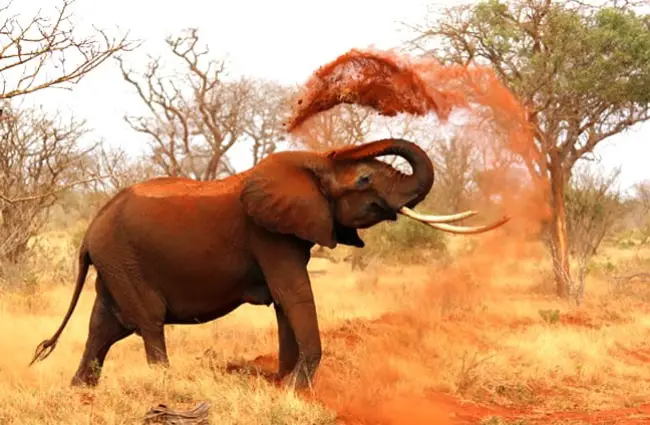Unveiling the Giants: A Deep Dive into the World of the African Elephant
The African elephant, a creature of immense power, profound intelligence, and surprising grace, stands as an icon of the African wilderness. These magnificent proboscideans are not merely large animals; they are architects of their ecosystems, custodians of ancient wisdom, and subjects of endless fascination for scientists and nature enthusiasts alike. Join us on an expedition into their world, exploring everything from their ancient lineage to their intricate social lives and their vital role in shaping the African landscape.

The African Elephant: A Portrait of Majesty
African elephants are the largest terrestrial animals on Earth, a fact immediately apparent upon encountering one. There are two recognized species: the larger savanna elephant (Loxodonta africana) and the smaller, forest elephant (Loxodonta cyclotis). While distinct, they share many fundamental characteristics that define the African elephant.
Physical Characteristics and Distinguishing Features
- Size and Weight: Adult savanna elephants can stand over 13 feet (4 meters) tall at the shoulder and weigh up to 15,000 pounds (7,000 kg). Forest elephants are slightly smaller, typically reaching 8 to 10 feet (2.4 to 3 meters) and weighing up to 10,000 pounds (4,500 kg).
- Ears: Their most distinctive feature, apart from their size, is their enormous ears, shaped somewhat like the continent of Africa itself. These large ears are crucial for thermoregulation, radiating excess body heat in the hot African climate.
- Trunk: The trunk is an extraordinary appendage, a fusion of the nose and upper lip, containing tens of thousands of muscles. It serves as a hand, a nose, a straw for drinking, and a communication tool, capable of delicate manipulation and immense strength.
- Tusks: Both male and female African elephants possess tusks, which are elongated incisor teeth. These are used for digging for water and roots, lifting objects, marking trees, and in defense. Tusk size varies greatly between individuals and species, with savanna elephants generally having larger tusks.
- Skin: Their thick, wrinkled, grey skin helps to retain moisture and protect them from the sun. Elephants frequently dust themselves with dirt or mud, which acts as a natural sunscreen and insect repellent.
Where to Find These Giants: Habitat and Range
For an animal lover hoping to find African elephants in the wild, understanding their habitat is paramount. African elephants are found across a wide range of sub-Saharan African ecosystems, from dense tropical rainforests to arid deserts, though they prefer areas with abundant water and vegetation.
- Savanna Elephants: These are the elephants most commonly seen on safaris. They inhabit grasslands, savannas, and open woodlands across East, Central, and Southern Africa. Countries like Kenya, Tanzania, Botswana, and South Africa are prime locations for viewing savanna elephants.
- Forest Elephants: As their name suggests, these elephants are primarily found in the dense tropical rainforests of Central and West Africa, particularly in countries such as Gabon, Congo, and Cameroon. Their elusive nature and the challenging terrain make them much harder to spot than their savanna cousins.
To find them, look for signs of their presence: broken branches, large footprints, dung piles, and disturbed vegetation. Waterholes and riverbanks are excellent places to observe them, especially during the dry season, as they gather to drink and bathe.

The Elephant’s Menu: Diet and Feeding Habits
African elephants are obligate herbivores, meaning their diet consists entirely of plant matter. Their sheer size necessitates consuming vast quantities of food daily, making them significant agents of environmental change.
What African Elephants Eat
- Grasses: A primary component of the savanna elephant’s diet, especially during the wet season when grasses are abundant and nutritious.
- Leaves and Twigs: Elephants browse on the foliage of trees and shrubs, using their trunks to strip leaves or break branches.
- Bark: They will strip bark from trees, particularly during dry seasons, to access moisture and nutrients. This can significantly impact tree populations.
- Roots and Tubers: Using their tusks and feet, elephants dig for underground plant parts, which are often rich in water and minerals.
- Fruits: Various wild fruits are consumed seasonally, contributing to seed dispersal.
Feeding Strategies and Impact
An adult elephant can consume between 200 to 600 pounds (90 to 270 kg) of vegetation per day and drink up to 50 gallons (190 liters) of water. Their feeding habits are not just about sustenance; they are a powerful force shaping the landscape. By tearing down trees, grazing grasses, and digging for water, elephants create clearings, maintain savannas, and create water sources that benefit countless other species.
A Journey Through Time: African Elephant Evolution
For aspiring zoologists and students researching evolutionary history, the African elephant offers a fascinating case study in adaptation and lineage. Elephants belong to the order Proboscidea, a group of mammals characterized by their trunks.
Ancient Ancestors and Diversification
The evolutionary journey of elephants stretches back tens of millions of years. Their earliest known ancestors, like Moeritherium, were small, pig-like aquatic creatures that lived around 55 million years ago in North Africa. Over millennia, these ancestors evolved, developing larger bodies, longer trunks, and eventually tusks.
- Proboscidean Lineage: The Proboscidea order includes not only modern elephants but also extinct giants like mammoths and mastodons.
- Divergence from Asian Elephants: African elephants diverged from their Asian counterparts (Elephas maximus) approximately 6 to 7 million years ago. Key differences include the larger ears of African elephants, the presence of tusks in both sexes of African elephants, and distinct trunk morphology.
- Savanna vs. Forest Elephants: Genetic studies indicate that savanna and forest elephants diverged about 2 to 5 million years ago, making them distinct species rather than subspecies. This highlights a remarkable example of adaptive radiation within a single genus.
Understanding their evolutionary path helps us appreciate the deep time scales involved in natural selection and the incredible adaptations that have allowed these magnificent creatures to thrive for so long.
The Circle of Life: Mating and Reproduction
The reproductive cycle of African elephants is a testament to their long lifespan and complex social structure, crucial for students researching their life history.
Mating Rituals and Gestation
- Sexual Maturity: Female elephants, or cows, typically reach sexual maturity between 10 and 12 years of age, though this can vary based on environmental conditions. Males, or bulls, mature around 15 years but usually do not successfully mate until their late 20s or early 30s when they are large and strong enough to compete.
- Musth: Male elephants enter a periodic state called “musth,” characterized by heightened testosterone levels, aggressive behavior, and a strong-smelling secretion from glands between the eye and ear. Musth signals to females that a bull is ready to mate and helps establish dominance among males.
- Gestation: Elephants have one of the longest gestation periods of any mammal, lasting approximately 22 months. This extended period allows for significant brain development in the fetus, contributing to the elephant’s renowned intelligence.

Calf Rearing and Social Bonds
A single calf is usually born, weighing around 200 to 250 pounds (90 to 113 kg) and standing about 3 feet (1 meter) tall. Calves are born with a strong sucking reflex and can stand within minutes of birth.
- Matriarchal Care: Elephant calves are born into a highly supportive matriarchal society. The mother, along with other females in the herd (aunts, sisters, grandmothers), participates in alloparenting, collectively protecting and nurturing the young.
- Dependence: Calves are entirely dependent on their mothers for milk for up to two years, though they may continue to suckle for longer. They remain closely bonded with their mothers and the herd for many years, learning essential survival skills.
- Lifespan: African elephants can live for 60 to 70 years in the wild, a testament to their robust physiology and complex social learning.
Ecosystem Engineers: Their Role and Interactions
The African elephant’s contribution to its ecosystem is profound, making them a keystone species. Their interactions with other animals are equally complex and vital.
Shaping the Landscape
- Seed Dispersal: Elephants consume vast quantities of fruit, dispersing seeds over wide areas through their dung. This aids in forest regeneration and plant diversity.
- Water Hole Creation: During dry seasons, elephants dig for water in dry riverbeds, creating water holes that become crucial resources for a multitude of other species, from antelopes to birds and insects.
- Habitat Modification: By pushing over trees and grazing extensively, elephants create clearings and maintain savannas, preventing dense bush encroachment and creating diverse habitats for smaller animals.
Interactions with Other Species
- Predator-Prey Dynamics: Adult elephants have virtually no natural predators due to their size and strength. Calves, however, can be vulnerable to lions, hyenas, and leopards, especially if separated from the herd. The herd’s protective formation is a formidable defense.
- Symbiotic Relationships: Elephants often have a mutualistic relationship with certain bird species, like oxpeckers, which feed on ticks and other parasites on the elephant’s skin.
- Competition: While generally coexisting, elephants can compete with other large herbivores for resources, particularly during periods of drought.

Elephants and Humanity: Culture, Conflict, and Conservation
The relationship between African elephants and humans is multifaceted, encompassing deep cultural reverence, historical conflict, and urgent conservation challenges.
Contribution to Human Culture
Throughout African cultures, elephants symbolize strength, wisdom, loyalty, and longevity. They feature prominently in folklore, art, and spiritual beliefs. Their intelligence and family bonds resonate deeply with human values, earning them a revered status in many societies.
- Symbolism: Often depicted as wise leaders, protectors, and symbols of royalty.
- Art and Crafts: Elephant motifs are common in traditional carvings, textiles, and jewelry.
- Tourism: Elephants are a cornerstone of wildlife tourism in Africa, drawing millions of visitors and contributing significantly to local economies.
Human-Elephant Interaction: Challenges and Coexistence
Unfortunately, the growing human population and expanding agricultural land have led to increased human-elephant conflict.
- Habitat Loss and Fragmentation: As human settlements expand, elephant habitats shrink and become fragmented, leading to increased encounters.
- Crop Raiding: Elephants can cause significant damage to crops, leading to retaliation from farmers.
- Poaching: The illegal ivory trade remains a severe threat, driving down elephant populations despite international bans.
Conservation efforts focus on anti-poaching initiatives, habitat protection, community engagement to mitigate conflict, and establishing wildlife corridors to allow elephants safe passage between fragmented habitats.
Encountering an Elephant in the Wild: Safety for Hikers
For a hiker encountering an African elephant, safety is paramount. While generally peaceful, elephants are wild animals and can be dangerous if provoked or threatened.
- Maintain Distance: Always keep a respectful and safe distance, at least 100 yards (90 meters). Never approach an elephant, especially a mother with calves.
- Observe Behavior: Learn to read elephant body language.
- Relaxed: Head down, ears gently flapping, trunk swinging.
- Curious/Alert: Head up, ears spread slightly, trunk raised to scent the air.
- Warning/Threatened: Ears fully spread, head held high, trunk curled or extended, mock charges, trumpeting.
- Do Not Run: Running can trigger a chase response. Instead, slowly and calmly back away, making yourself appear as non-threatening as possible.
- Avoid Blocking Paths: Never position yourself between an elephant and its escape route, or between a mother and her calf.
- Stay Downwind: Elephants have an excellent sense of smell. Staying downwind can help prevent them from detecting your presence and potentially becoming agitated.

Caring for Giants: A Zookeeper’s Guide to African Elephants
Caring for African elephants in captivity is a monumental task, requiring specialized knowledge, extensive resources, and a deep commitment to animal welfare. For zookeepers, understanding their complex needs is crucial.
Essential Tasks for Zookeepers
- Dietary Management: Provide a high-fiber diet consisting of hay, fresh browse (branches and leaves), and specialized elephant pellets. Monitor intake and adjust based on age, activity level, and health. Ensure access to fresh water at all times.
- Enrichment: Elephants are highly intelligent and require constant mental and physical stimulation.
- Foraging devices: Hide food in various locations or use puzzle feeders to encourage natural foraging behaviors.
- Environmental enrichment: Provide logs, tires, sand piles, and water features for play and exploration.
- Social enrichment: Maintain appropriate herd structures, as elephants are highly social animals.
- Foot Care: Regular foot inspections and trimming are critical to prevent lameness and infection, given their immense weight. This often involves positive reinforcement training.
- Veterinary Care: Implement a robust preventative healthcare program, including regular physical exams, vaccinations, and parasite control. Be vigilant for signs of illness or injury.
- Habitat Maintenance: Keep enclosures clean, safe, and appropriately sized, with varied terrain, shade, and access to bathing areas.
- Training: Utilize positive reinforcement training for husbandry behaviors (e.g., presenting feet for inspection, allowing blood draws) to minimize stress during veterinary procedures.
What to Avoid in Captive Care
- Isolation: Elephants are social animals; solitary confinement can lead to severe psychological distress.
- Inadequate Space: Small, barren enclosures restrict natural movement and behavior, leading to boredom and stereotypic behaviors.
- Poor Diet: Diets lacking fiber or excessive in sugar can lead to digestive issues, obesity, and foot problems.
- Lack of Enrichment: A lack of mental and physical challenges can result in apathy, aggression, or repetitive behaviors.
- Punishment-Based Training: Aversive training methods are detrimental to the elephant’s welfare and the relationship with its caregivers.
- Ignoring Social Dynamics: Mismanaging herd introductions or separations can cause significant stress and conflict.
A Huge List of Interesting Facts About African Elephants
Beyond their scientific classifications and ecological roles, African elephants are full of surprising and captivating details:
- Longest Gestation: At 22 months, they have the longest gestation period of any mammal.
- Brain Power: Elephants have the largest brains of any land animal, weighing over 11 pounds (5 kg), contributing to their remarkable intelligence and memory.
- Complex Communication: They communicate using a wide range of sounds, including infrasound (low-frequency rumbling) that can travel for miles, as well as body language and scent.
- Self-Awareness: Elephants are one of the few species known to recognize themselves in a mirror, indicating a high level of self-awareness.
- Emotional Depth: They display complex emotions, including grief, joy, compassion, and empathy. They have been observed mourning their dead, gently touching bones with their trunks.
- Water Seekers: Their excellent sense of smell allows them to detect water sources from miles away.
- Trunk Versatility: An elephant’s trunk has no bones, only muscle, and can perform tasks as delicate as picking a single blade of grass or as powerful as uprooting a tree.
- Tusk Growth: Tusks grow continuously throughout an elephant’s life. The wear patterns on tusks can indicate an elephant’s age and dominant side.
- Walking on Toes: Elephants actually walk on their tiptoes, with a thick pad of connective tissue behind their toes acting as a shock absorber.
- Matriarchal Society: Herds are led by an older, experienced female, the matriarch, whose knowledge of water sources and foraging grounds is crucial for the herd’s survival.
- Dust Baths: Elephants frequently cover themselves in dust or mud, which acts as a natural sunscreen and insect repellent, protecting their sensitive skin.
- Swimming Ability: Despite their size, elephants are excellent swimmers and use their trunks as snorkels.
Conclusion: Guardians of the Savanna
The African elephant is more than just a large animal; it is a cornerstone of its ecosystem, a symbol of wild Africa, and a creature of profound complexity and intelligence. From their ancient evolutionary roots to their intricate social structures and their vital role in shaping the landscape, these giants continue to inspire awe and demand our respect. Understanding their needs, appreciating their contributions, and actively participating in their conservation are essential steps in ensuring that the trumpeting call of the African elephant echoes across the continent for generations to come.

![Red Angus Closeup of a beautiful Red Angus cowPhoto by: U.S. Department of Agriculture [pubic domain]https://creativecommons.org/licenses/by/2.0/](https://animals.net/wp-content/uploads/2020/03/Red-Angus-4-238x178.jpg)




![Red Angus Closeup of a beautiful Red Angus cowPhoto by: U.S. Department of Agriculture [pubic domain]https://creativecommons.org/licenses/by/2.0/](https://animals.net/wp-content/uploads/2020/03/Red-Angus-4-100x75.jpg)

